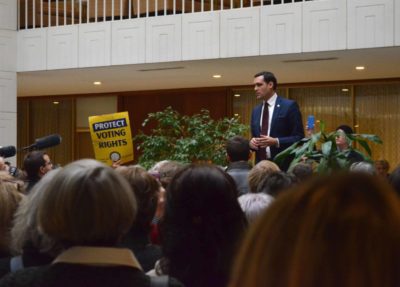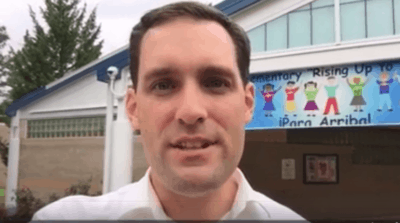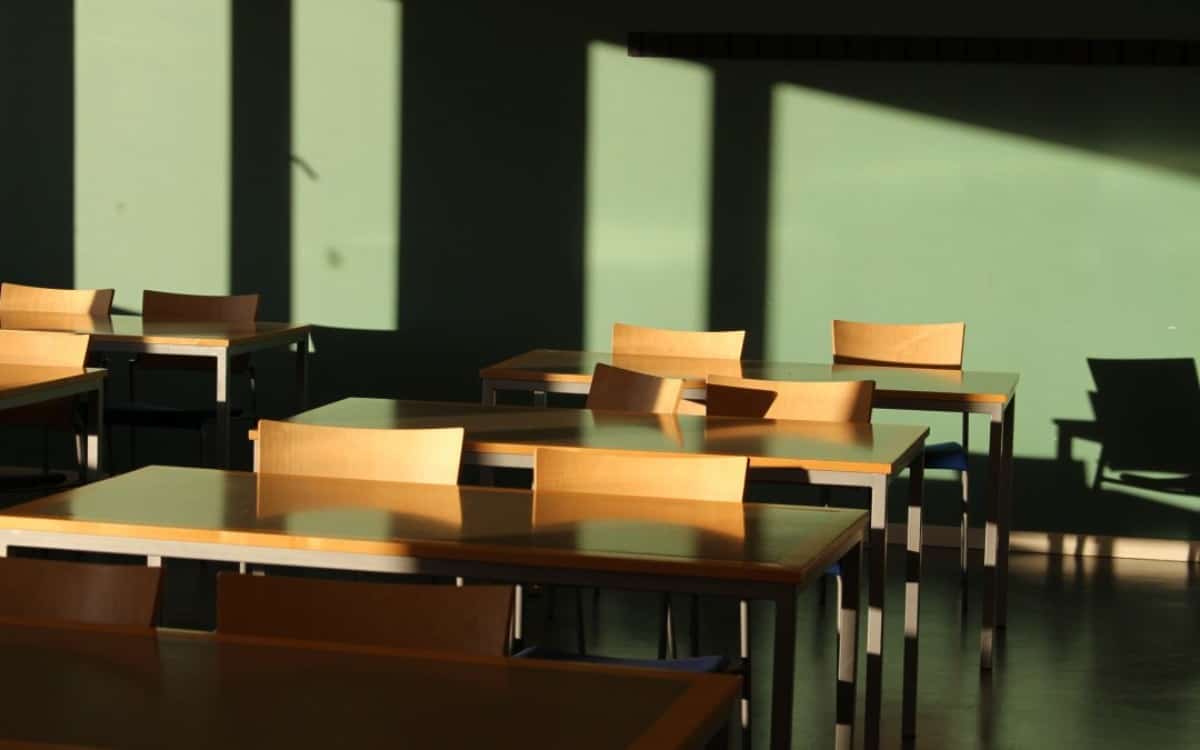Last month, a new round of school grades came out, showing that North Carolina has 489 “low-performing schools.” This is down from 581 last year, but still, that’s 489 schools that fell short on measures of performance and growth. A total of 663 schools (26.4 percent of all schools in the state) failed to meet expected growth targets. And while the number of low-performing schools fell, the number of “recurring low-performing schools” (those categorized as low-performing for at least two out of the past three years) increased from 401 to 415.
At many of these schools a generation of students has struggled with no significant change.
At some, not even 10 percent of the students can read. We are failing these students, with no regard to the long-term cost to our shared interests.
Predictably, many of these students are black or brown. Almost universally, they are poor.
We use the euphemism “achievement gap” to label these children as failures, as if they are the root of the problem. Then we mandate approaches that make for horrible learning experiences for the children that need the the most creative and supportive environments:
- We test the students incessantly.
- We standardize the curriculum and dumb down classroom instruction to focus only on passing the tests.
- We suspend children who struggle in such repressive environments.
Consequently, we end up with schools into which most educated, middle-class parents will not enroll their children. We abandon the neediest schools. We isolate and segregate the most at-risk students. And then we heap blame on their teachers and leaders, even while they are the only people hanging in there through the toughest of circumstances.
The Public School Forum’s new report on educational opportunity seeks to change the perspective of the public on these schools. The report weaves together the findings and recommendations of three study group committees, on the impact of childhood trauma on learning, racial equity, and low-performing schools. In doing so, the report pushes back against public apathy, making it harder to ignore the state’s struggling schools and the students who attend them. It counsels against blaming the students and schools for failure. Finally, the report argues for collective responsibility, because the success of these students is certainly for the collective good.
Students in low-performing schools are victims of systemic opportunity gaps. They lack the opportunities for cultural enrichment and social exploration that make school learning an enhancement to real-world experiences. Their schools lack the resources and learning opportunities that can help them overcome the challenges of poverty, school resegregation, unequal access to health care, food insecurity, and so many other manifestations of racism and inequality.
North Carolina has no comprehensive approach to addressing the needs of these schools. Last year, the Department of Public Instruction was funded to provide specialized support to only 75 of the 581 schools labeled as low-performing. For the other 506 schools, the state gave them a grade of D or F and largely expected the label itself to prompt the school to “buck up and do better.”
Testing and school grades are not interventions for opportunity gaps. They may even exacerbate the problem by sending a signal to better-resourced parents to stay away from these schools and by indicating to community leaders that making investments in a school is “like throwing good money after bad.”
Why do we allow some schools to struggle year after year? Certainly one reason is that the families and communities that these schools serve have little political capital to demand a change. Neither the learning environments nor performance results of these schools would be tolerated by political leaders in wealthier confines.
We must also question the suspicious interaction between ignoring these schools and political efforts to promote school privatization. Over the past few years, privatization advocates have been actively courting the families served by low-performing schools to support “choice” initiatives such as charter schools and vouchers. The same advocates have also successfully pushed for implementation of an Achievement School District that would turn management of some of these schools over to for-profit charter management organizations. Does allowing these schools to linger in failure actually benefit the proponents of the privatization movement? Does the labeling of these schools with a “D” or an “F” serve a purpose of encouraging support choice initiatives that undermine potential systemic solutions?
Choice policies will never result in educating all of the children in these schools. It is understandable why many parents would want a choice other than sending their child to a low-performing school. But the children who remain in these schools after others make a choice to leave are among the most challenging to educate.
Though the Public School Forum’s report has dozens of recommendations on how to improve educational opportunity, I want to highlight three that seem especially compelling to me as I listen to educators working in low-performing schools:
First, these schools need outstanding leadership. The school principal is the most important catalyst needed for change. We must invest in developing, supporting, and sustaining strong principals for these schools. To thrive, those principals need supportive district and school board leadership as well. Collectively, these leaders must have ambitious goals, additional resources, and an uncanny ability to sustain hope and persistence among their students, families, and staff members.
Second, the teachers in these schools need more time to do their jobs. The school day needs to be longer. The school year needs to be extended to prevent summer learning loss and provide more instructional opportunities. Teachers need more time for professional development on culturally relevant teaching, serving students coping with trauma, and using new teaching resources. Teachers also need more time for collaborative planning and peer-to-peer learning.
Yet, building political support for principals and teachers may be the easy task before us. There is one other call in the Public School Forum’s report that may have an even greater impact on improving student learning, but this change requires community investment beyond simply funding school professionals: the children in these schools would benefit from a renewed commitment to integration.
The black, brown, and poor faces of these schools are part of the context of the problem. The resegregation of our schools is directly linked to the persistence of this overwhelming number of low-performing schools.
What will it take for North Carolina to have a new path forward for a 21st century form of integration?
In the past, integration was only achieved through court order. Is it even possible that in our current century this can be done by choice? Not the “choice” of opting out of our traditional public school system, but the choice to reconstruct a system of schooling where all children have an equal opportunity to succeed no matter where they live. The active choice by white leaders and white community members to take an interest in the children currently stuck in low-performing schools. The choice to be persistent in pursuing equal opportunity for students, families, and communities that are not where educated middle- and upper-class families live, study, work, or play, but which are still a part of a larger community that we all share.
Recommended reading




